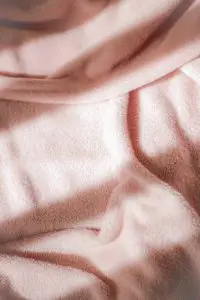Taking the time to understand the differences between denim and cotton will help you make more informed decisions regarding their functionality and usability in the future
Introduction
several fabrics are used in the manufacture of different fashion apparel worldwide, including denim and cotton. Both fabrics can be used to make clothes for adults and children. However, they differ in several ways that enable them to serve different functions. There are significant differences between cotton and denim materials based on the fabric used in making them. Although denim is a byproduct of cotton, the fabric used for the production of denim is different.
Our goal in this article is to provide you with an understanding of the differences between denim and cotton, and we will discuss each point under the following headings.
- Denim vs Cotton: An Overview
- Overview of Denim
- Overview of Cotton
- Denim vs Cotton
- Final Thoughts
Denim vs Cotton: An Overview
Overview of Denim
Denim is an end-product of cotton fabric that is made using a twill weave that creates diagonal ribbing patterns. The weft threads pass under the warp threads, which are more pronounced on the right side. Due to its warp-facing style, denim assumes this pattern. Its diagonal ribbing distinguishes it from cotton and canvas fabrics.
The fabric was originally known as serge de Nîmes due to its origins in Nîmes, France. However, its current name, “denim,” is an English colloquialism derived from the French “de nim.”
During the Gold Rush in the United States in 1853, Levi Strauss opened his shop in San Francisco and sold dry goods, buttons, thread, and canvas that the gold miners would use for their tents. Levi also manufactured durable denim pants equipped with deep pockets for the miners to safely store their gold.
To make these pants more durable, stronger, and more secure, one of Strauss’ customers, Jacob Davis, added copper rivets to the pockets and seams. Strauss and Davis patented these pants, which prompted Strauss to begin mass production and marketing. In the subsequent decades, these denim pants became more than just miners’ outfits and became iconic fashion items.
Denim Varieties
Indigo Denim
Usually indigo denim jeans tend to be mostly light in the interior and blue on the right side because the indigo dye is used to dye the warp threads while the white threads are used for the weft. This is the reason why most indigo denim jeans tend to be almost light on the interior and blue on the right side.
Stretch Denim
cotton denim is not known for its excellent stretch properties, so to make stretch denim, the cotton fabric is usually woven with spandex or any other elastic fabric that gives it greater flexibility. Stretch denim is mostly used to produce jeans with a slim fit.
Crushed Denim
Denim that has been crushed is usually treated in a very specific way in order to make it appear wrinkled.
Acid-Wash Denim
The raw denim is treated with chlorine and pumice stone to give it a marbled appearance so that you can see the color difference between the two.
Dry/Raw Denim
A raw denim shirt or dry denim shirt is characterized by its stiffer texture compared to other types of denim, mainly due to the fact that the denim fabric is not washed after dyeing.
Sanforized Denim
Sanforized denim is designed to avoid shrinking after being washed, and it can be used on all kinds of denim except raw denim. Sanforized denim can be used on any kind of denim, including raw denim.
Denim Features
- As a lightweight, comfortable fabric, denim makes an excellent choice for day-to-day wear.
- It is very effective at hiding stains.
- Denim can be worn in any weather condition.
- The material has a high tensile strength.
- Materials used to make denim are of high quality and have a classic appearance
Overview of Cotton
As one of the oldest plants globally, cotton can be traced as far back as 600 BC in India. Cotton is a fabric made from a versatile plant that can be turned into other materials such as polyester, flannel, denim, khaki, and gabardine. As a result, cotton is commonly used as a base fabric for a variety of other industrial fabrics.
There are several countries around the world where cotton, which is classified as a vegetable fibre, grows in abundance in tropical and subtropical regions. Because of its importance in the fabric industry, cotton is also used as a major trading item in several countries around the world.
Unlike denim, which only comes in a few colors, cotton can be bleached and dyed into many different colors, as opposed to denim, which mostly comes in just a color. Cotton is also widely used in industry, as it is a reliable material for bedding, tents, and curtains.
As opposed to denim, cotton fabric is more breathable, sweat-absorbent, lightweight, soft, and accessible to be sewn and laundered, and has one characteristic in common with denim, which is the fabric’s durability.
Cotton: Features
Moisture Control
With its light texture, cotton fabric is very pleasant to the skin, is breathable, and keeps moisture away from the body, so that you will remain comfortable while executing your daily activities or exercising.
Comfort
In terms of comfort, cotton fabric is one of the most popular fabrics due to its natural properties and texture of the fabric. It is soft, easy to wear, and stretches easily, so it makes for a perfect garment.
Durability
As a result of its excellent tensile strength, cotton can withstand a lot of wear and tear, making it one of the most durable fabrics available.
Resistance
In addition to its resistance to many things, the cotton fabric is also resistant to honeycombs, faded line streaks noticed in the knee area, pale streaks around the crotch area, whiskers, and faded marks and patterns.
Denim vs Cotton
The following are some of the distinguishing characteristics of denim and cotton, as well as their unique features.
Denim vs Cotton: Main Differences
Although denim is a byproduct of cotton, there are several differences between the two.
Colors
Among the various dyes used in manufacturing denim, indigo is the most popular dye, whereas cotton dyes come in a variety of colors.
Washability
Due to the dense nature of denim and the fact that it provides insulation, it is harder to clean compared to cotton, which is lighter and more breathable.
Production
As a result of its complexity, denim is manufactured commercially, while cotton can either be produced at home or can be manufactured in commercial factories due to its ease of manufacture.
Style
Contrary to cotton fabrics, which are primarily bleached and dyed to give them a fresh look, denim fabrics can be sandblasted or sandwashed to give them a trendy, worn appearance.
Uses
Cotton has a wide variety of industrial uses, such as bedding, curtains, rugs, bookbinding, and curtains. Denim is popular in many countries because it can be used to make jeans, skirts, bags, jackets, and sofa covers.
Perception
There are several distinct differences between how people perceive denim and cotton. Denim is perceived as the material primarily used for casual clothing such as jeans. Cotton, on the other hand, is regarded as a fabric that can be used for a wide variety of purposes.
Denim vs Cotton: Pros and Cons
Pros of Denim
Versatility
There is a multitude of ways you can wear denim. It can be styled in multiple ways and is extremely versatile when it comes to outfits.
Wrinkle and Shrink Resistant
In contrast to cotton, denim does not wrinkle and does not shrink as a result of its twill weave pattern and the texture of the material. Denim is very neat and aesthetically pleasing due to its wrinkle-resistant factor.
Durability
In terms of durability and long-lastingness, denim materials are very durable due to the weave pattern and the texture of the fabric. When properly maintained, denim can be used for many years and only needs to be replaced every few years.
Low Maintenance
The twill weave of denim prevents stains from showing through and allows you to wear denim several times without washing it. Instead of washing the entire garment, spot cleaning can remove stains.
Cons of Denim
Warm and Insulating
The warmth and insulation provided by denim is beneficial in cold climates, but can be uncomfortable to wear denim for long periods of time in warm climates.
Stretches Out Over Time
As a result of frequent use, denim does stretch out over time and lose its shape despite not being the most stretchy material on the market.
Plain
As a fabric, denim can be quite challenging to embellish and decorate since, without chemical enhancement, the fabric appears quite drab. However, sandblasting and sand-washing have been known to accentuate the fabric’s appearance.
Pros of Cotton
- A feeling of tenderness on the skin
- Wearable and washable
- It does not return odours
- The non-static nature of this product prevents it from attracting dirt.
- In addition to being durable, it is also wear-resistant.
- It provides insulation
- Does not cling to the skin
Cons of Cotton
Shrinkage
Upon contact with water, cotton fibres shorten, which results in fabric shrinkage, regardless of the preshrunk label.
Cotton shrinks when it is dried at high temperatures, as well. To prevent this, use low temperatures to dry all cotton materials. However, cotton shrinks for a variety of reasons.
Wrinkles Easily
It is important to note that cotton wrinkles easily, which means that it must be ironed continuously. This can be a significant disadvantage if cotton is to be used for official purposes or travel.
Retains Water
Cotton fabrics, while keeping sweat away from your body while you perform your tasks, also retains water, which is unwelcome. As soon as you start sweating, cotton will soak it up, causing you discomfort and causing your cloth to sag.
Similarly, it takes longer for cotton fabrics to dry when you wash them because they retain much water.
Highly Flammable
Because the cotton has a high flammability rating, it burns rapidly as it is highly combustible.
Vulnerable to Mildew
In the case of extreme dampness, it can eventually develop mildew, which can cause permanent damage to the carpet.
A Great Online Class: Color Theory for Textile Projects by Domestika
If you are interested in learning more about how you can create a successful name for your business, we recommend taking a look at the online class “Color Theory for Textile Projects”.
The course is currently under promotion, but you can use the discount code: T_BROWNLEES-PROMO to get an additional 10% discount on your purchase.
This online class offered by Domestika, at a very inexpensive price covers all you need to know to develop your textile project by leveraging color theory to create the perfect color palette. If you apply to the course through the link below you’ll be supporting 440 Industries, and we thank you for it!
Final Thoughts
The textile materials denim and cotton have been in the fashion industry for a long time; they are traditional materials that have been considered to be durable, reliable and fashionable for many years now. By understanding the differences between the two versatile materials, we can make better choices regarding usability and functionality. They can both be used for a variety of purposes in both personal and industrial settings.







